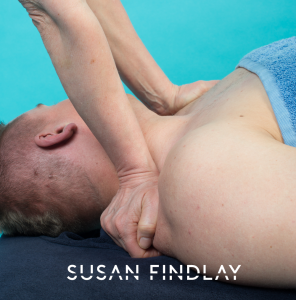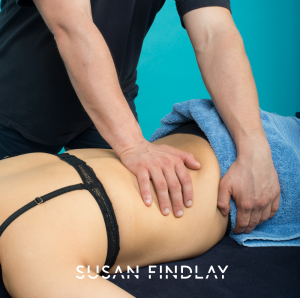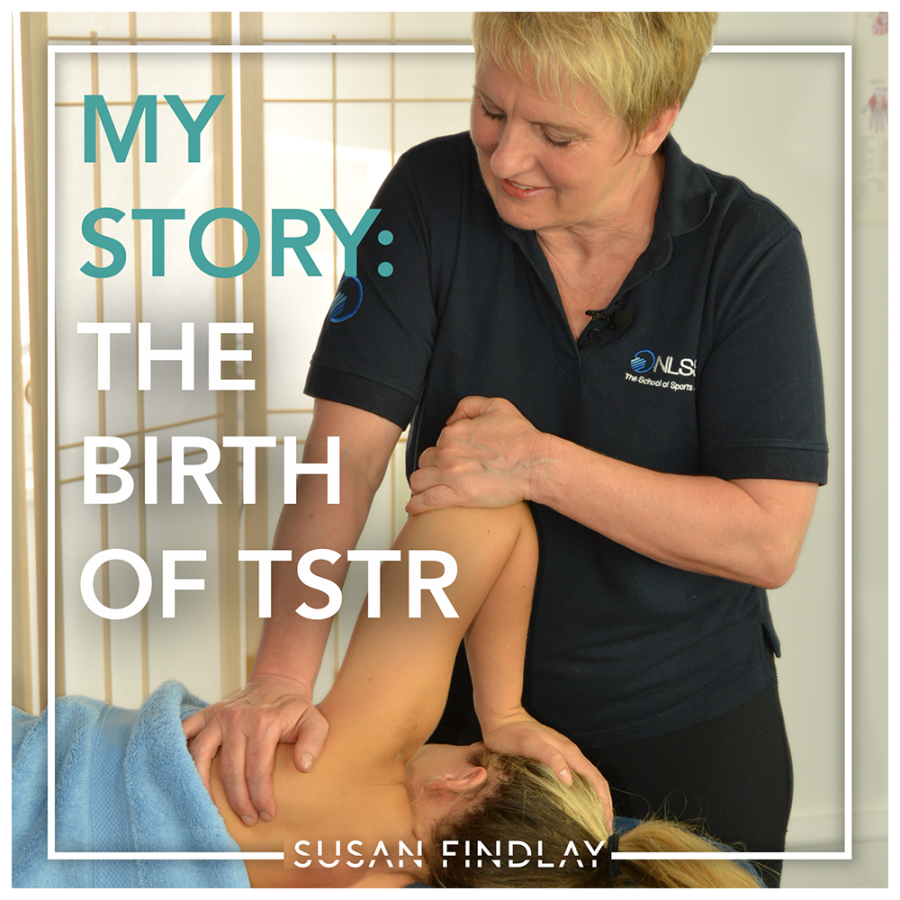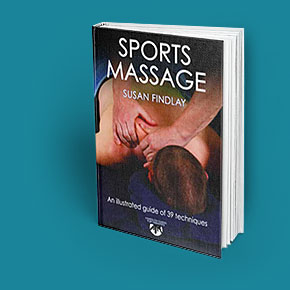As a tool I love Soft Tissue Release (STR) but I find the application difficult at times, especially when I stick to the rules. However, like most therapists, I like to experiment, and this was one of those situations which forced me to think outside of the box. The question was “how could I achieve the same result but remove the difficulties?”
 One of the problems I encountered was not having enough hands to control the movement (sometimes I feel I would benefit from two more!). When I was faced with this situation I would ask my client to participate, however this often had the effect of them contracting the very muscle group I was targeting. This made it very difficult to sink in and achieve an effective lock, which was counterproductive.
One of the problems I encountered was not having enough hands to control the movement (sometimes I feel I would benefit from two more!). When I was faced with this situation I would ask my client to participate, however this often had the effect of them contracting the very muscle group I was targeting. This made it very difficult to sink in and achieve an effective lock, which was counterproductive.
I was also struggling with the idea that by placing my thumb on a very tight area of tissue tension and shortening the movement pattern I would soften or release the tension. For a start, it was very hard on my thumb, and if you are a hypermobile therapist you should not ever be applying this technique. Secondly, if I had a large area of tension and needed to do multiple applications this would defeat the purpose; in many cases it resulted in bruising the tissue, so in turn I was causing an injury. It goes without saying that this was not my desired outcome!
There was also the question of what I should be doing with multipennate muscles; do I apply the technique in multiple directions? If I was targeting the pectoralis this would mean applying the lock and creating movement in many directions, again and again, this is a sensitive area to start with so not ideal, I think you get the picture. I needed an approach that could create more space, increase movement, and not overwork the tissue.
The purpose of Transverse Soft Tissue Release (TSTR) is to improve the tissue environment without causing undue stress. I have heard multiple times how painful this technique can be from clients and therapists alike. Whilst it is a strong technique, it should not include pain. It should instead feel like the tissue is being given a good stretch without being beaten up!
The beauty of this of this approach is:
- It can be integrated into a massage
- Your flow is not broken so your client will remain more relaxed.
- You gain greater control of muscle when there is a greater ROM, for instance the shoulder girdle or pelvis.
- It is useful when the depth of muscle is shallow, for example in the scapula
- It can prevent overstretching; you work within the limits of incremental changes. This makes it easier for the body to adapt to the change.
- It can help to release tension or separate adhesions without overworking the tissue.
- It can be applied when there is no solid or supportive structure beneath the hands, for example the abdominals.
- When the muscle fibres are multipennate or circular, such as the gluteus maximus or pectoralis, it is extremely efficient and targets a greater area in a single movement.
- It can be very specific, even when there is not a great deal of movement or space available.
- When there is too much movement and it is hard to control, for example the back muscles, using a combination of transverse and resisted eliminates this problem,
- It is useful when working with hypermobile or pregnant clients, as it allows you to target the very area which needs attention without overstretching a joint that is already at full ROM.
 Combining TSTR with Resisted gives you much more control and support, and enables you to be more precise. I think that reciprocal inhibition equates to relaxation of those muscles being stretched, which helps to maintain your lock.
Combining TSTR with Resisted gives you much more control and support, and enables you to be more precise. I think that reciprocal inhibition equates to relaxation of those muscles being stretched, which helps to maintain your lock.
In my online course I detail this in a more technical manner, and explain how the technique interacts with different receptors. There is a good reason why we use a variety of techniques. The connective tissue responds to various forms of touch; we use compression, vibration, rocking, shaking, long strokes, stretching, fast and slow movements, all of which communicate to different receptors. This is why using only one technique does not get you total results. In order to function effectively as a massage therapist it is important to embrace the value of a multi-faceted approach.
If you’re interested in learning more, you can join me on my online and practical TSTR workshop.

